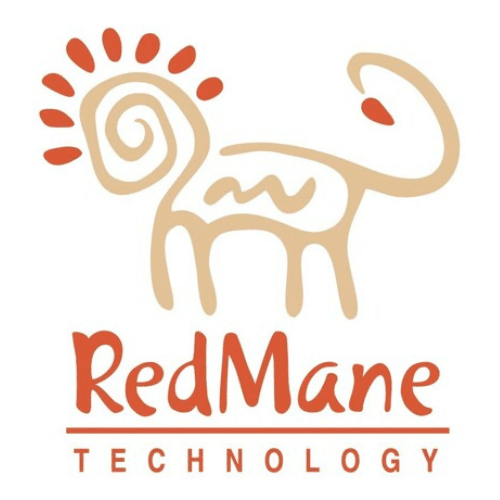Written By: RedMane Technology

Modernizing from the Ground Up: How Mobile Technology Brings CCWIS Goals Within Reach
When it comes to modernizing child welfare, the conversation often starts with systems—platforms, integrations, and architecture. Yet, the modernization of human services is ultimately about people: caseworkers, supervisors, and the families they serve.
The success of any system depends on how well it supports the professionals who rely on it in real time. This is why the path to a modern, compliant Comprehensive Child Welfare Information System (CCWIS) doesn’t begin in the back office, but on the frontlines.
Mobile systems of engagement are a critical part of that process and help agencies bridge the gap between service delivery and system documentation—transforming CCWIS compliance from an abstract technical requirement into a daily operational reality.
Understanding CCWIS Compliance
Under federal regulation 45 CFR §1355.50–§1355.59, CCWIS requires child welfare systems to:
- Collect and maintain complete, accurate, and timely data;
- Support the child welfare program’s business processes;
- Exchange data with other systems to promote interoperability;
- Be modular and reusable, allowing states to modernize incrementally;
- Ensure data quality and integrity through automated validation; and
- Support continuous quality improvement (CQI) through real-time reporting and analytics.
Mobile technology supports all these requirements directly without requiring states to “rip and replace” their legacy systems.
From Intake to Case Closure: Mobility Enables CCWIS Business Functions
Mobile systems of engagement empower caseworkers to complete critical child welfare business functions right where the work happens: in the field.
Intake and Investigations: Mobile tools allow workers to record allegations, collect digital signatures, upload photos, and complete structured safety or risk assessments onsite. Data captured instantly syncs to the system of record, improving accuracy and meeting CCWIS’s data timeliness and quality standards.
Case Management: Caseworkers can document contacts, create case notes, and update service plans while with families. Including required fields and built-in validations, mobile tools support data completeness and quality compliance under §1355.52(b) and (g).
Eligibility and Financials: Mobile solutions can integrate with eligibility systems or financial modules to verify service authorizations, track provider payments, and ensure data is exchanged accurately across systems, fulfilling interoperability mandates.
Each of these mobile functions demonstrates that CCWIS compliance is not limited to back-office system design but can be achieved through how data is captured and managed at the point of service.
Interoperability and Data Sharing Made Simple
CCWIS emphasizes interoperability across child welfare, health, education, and court systems. Mobile systems of engagement strengthen these connections by securely transmitting data from the frontlines to the enterprise layer, where it can be shared with partner systems through APIs or CCWIS-compliant interfaces.
When a caseworker updates an investigation on location, that data can be made available immediately to supervisors, eligibility specialists, and partner agencies. This real-time synchronization ensures that everyone is working from the same source of truth, meeting both operational and regulatory expectations for timely, accurate, and connected data.
Modular and Incremental Modernization
CCWIS encourages a modular approach to system development that allows states to modernize function by function rather than embarking on full-scale replacement. Mobile engagement platforms align perfectly with this principle as agencies can deploy mobile tools as modular extensions of existing systems. This means delivering immediate compliance benefits such as the following:
- Meeting data quality and timeliness requirements
- Supporting staff efficiency and CQI
- Reducing the administrative backlog without disrupting ongoing operations
This approach makes modernization and compliance attainable for agencies of any size or maturity level and positions mobile technology as a first step on the path to CCWIS modernization.
Continuous Quality Improvement and Oversight
Mobile tools align with CCWIS compliance to support CQI and program monitoring. They feed high-quality, real-time data into CQI dashboards, enabling supervisors and administrators to:
- Monitor case activity in real time;
- Identify trends or data anomalies;
- Ensure compliance with timeliness standards; and
- Make proactive program and policy adjustments.
This kind of visibility not only fulfills regulatory expectations, but also improves accountability, workforce support, and ultimately, outcomes for children and families.
Modernization Without Disruption
The myth that achieving CCWIS compliance requires starting over with an entirely new system has discouraged many states from beginning their modernization journey. In reality, mobile systems of engagement enable agencies to modernize in place—building compliance step by step.
By improving data quality, enabling interoperability, supporting modular design, and empowering frontline staff, mobile solutions move agencies significantly closer to CCWIS compliance without costly or disruptive system replacement.
This mobile approach to modernization represents a pathway that centers people by aligning technology advancement with the mission to protect children, strengthen families, and improve the quality of service delivery every day.
About the Author
Share this post on your social media accounts:
The viewpoints expressed in this post are the author’s own and do not necessarily reflect the policies or views of APHSA.
